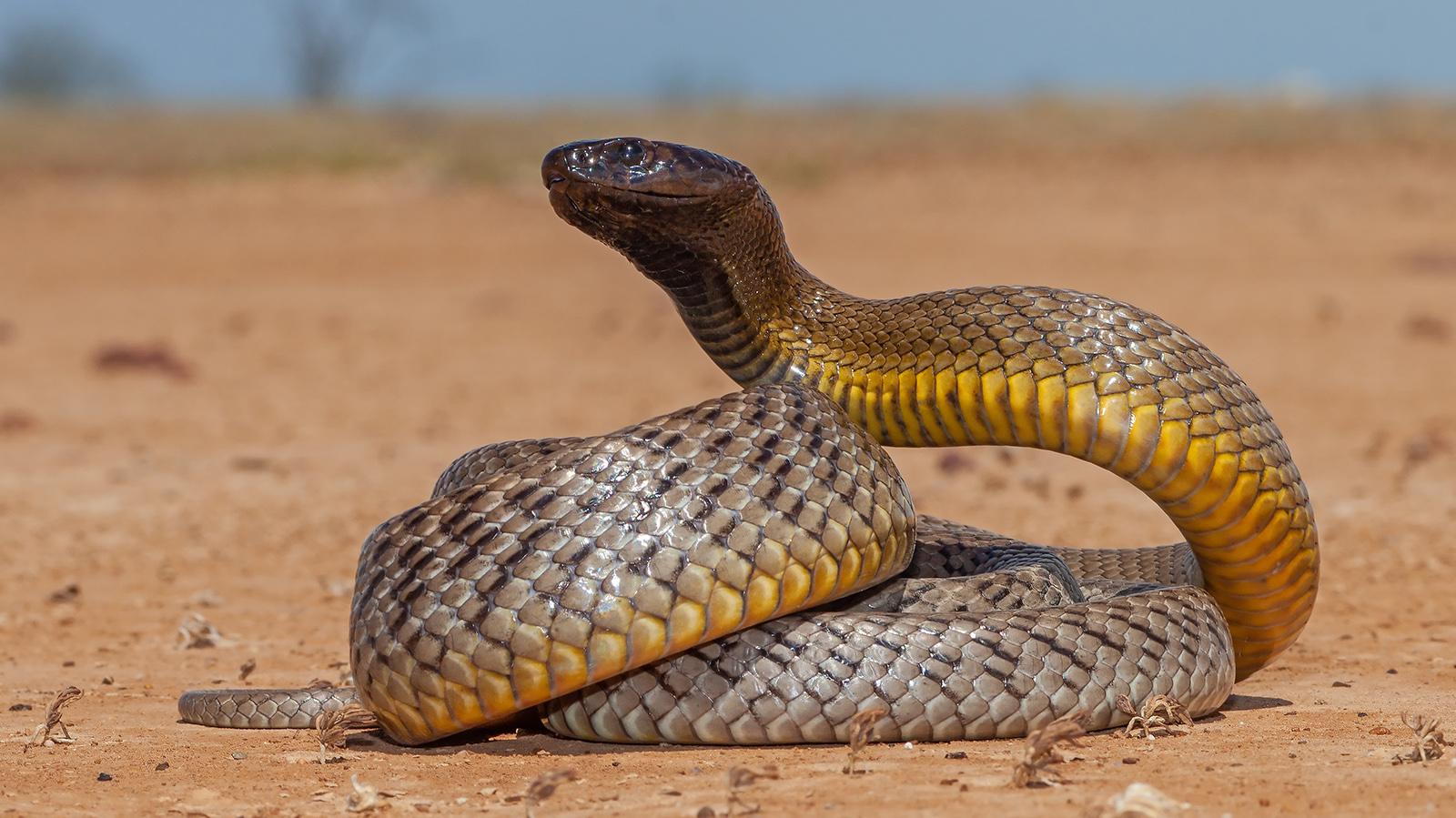
Introduction
The Inland Taipan (Oxyuranus microlepidotus) is a species that captures both fear and fascination. Recognized as the most venomous snake on the planet, its bite delivers an incredibly toxic cocktail that can cause death in under an hour if left untreated. Yet, in a twist of nature’s irony, this deadly snake is also one of the least aggressive and rarely encountered by humans.
Physical Characteristics
The Inland Taipan typically measures between 1.8 and 2.5 meters (6 to 8 feet) in length. Its coloration varies seasonally—from dark brown in winter to light olive or tan in summer—helping it absorb or reflect heat as needed. The snake's name, “microlepidotus,” means "small-scaled," referring to the smooth, fine scales that give it a glossy appearance.
Habitat and Distribution
Unlike many venomous snakes, the Inland Taipan is found only in remote, semi-arid regions of central Australia, particularly in the black soil plains of Queensland, South Australia, and the Northern Territory. It prefers clay cracks, crevices, and deep fissures where it can hide from predators and extreme heat.
Diet and Behavior
The Inland Taipan feeds almost exclusively on small mammals, especially native rats and mice. With lightning-fast strikes and precision, it delivers multiple bites in quick succession—often killing its prey in seconds. Despite its deadly capabilities, the snake is highly reclusive and tends to flee from humans. Bites are extremely rare and almost always occur in captivity or during professional handling.
Venom and Danger to Humans
The Inland Taipan’s venom is composed of potent neurotoxins, hemotoxins, and myotoxins. It is estimated to be 50 times more toxic than that of the Indian cobra and over 10 times stronger than that of the coastal taipan. A single bite can deliver enough venom to kill over 100 adult humans.
However, fatalities are almost unheard of thanks to the snake’s remote habitat and the availability of antivenom when needed. Most bites have occurred among professional herpetologists and snake handlers, not the general public.
Conservation Status
Currently, the Inland Taipan is not considered endangered. Its remote habitat protects it from many of the threats faced by other snake species. However, like all wildlife, it is vulnerable to habitat destruction and environmental changes.
Interesting Facts
-
The Inland Taipan is also known as the "fierce snake" due to the potency of its venom, not its behavior.
-
Despite being so venomous, it is considered calm and placid in captivity.
-
It is diurnal, hunting during the day, particularly in the cooler morning hours.
Conclusion
The Inland Taipan is a paradoxical creature—extremely venomous, yet extremely shy. Its place at the top of the venom chart highlights the incredible diversity and specialization of Australian wildlife. For herpetologists and nature enthusiasts alike, the Inland Taipan is a fascinating reminder of nature’s complexity and the importance of respecting even the most dangerous animals from a safe distance.

You must be logged in to post a comment.